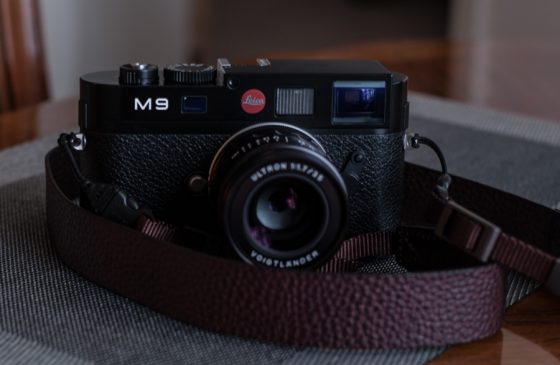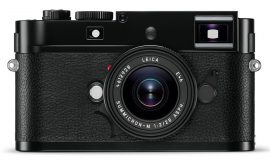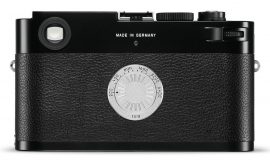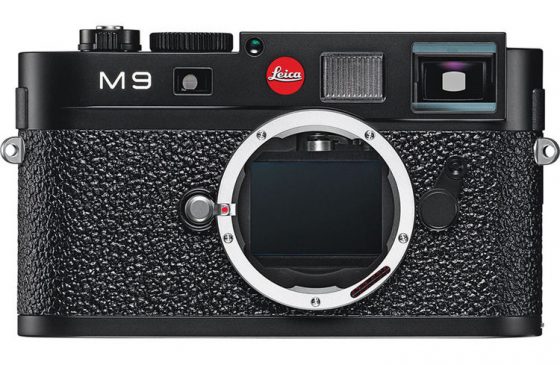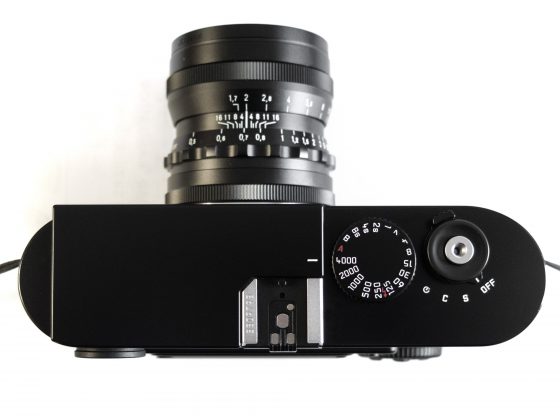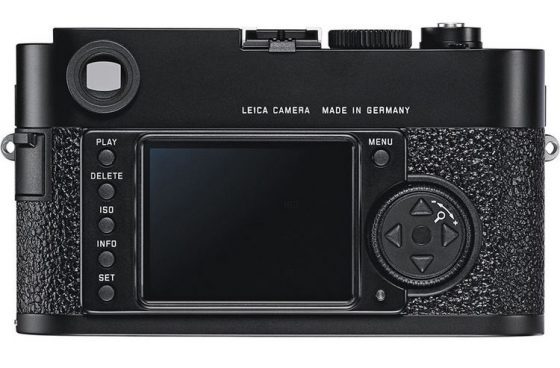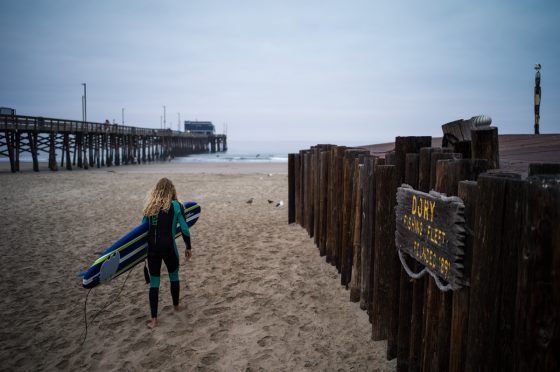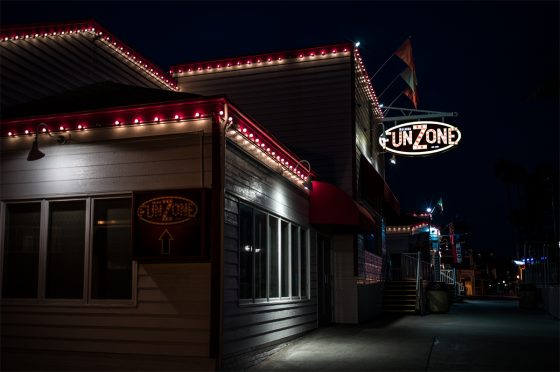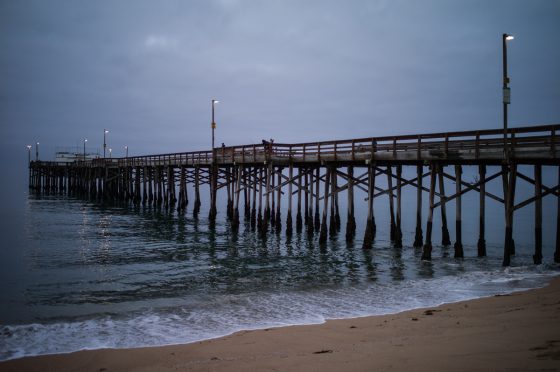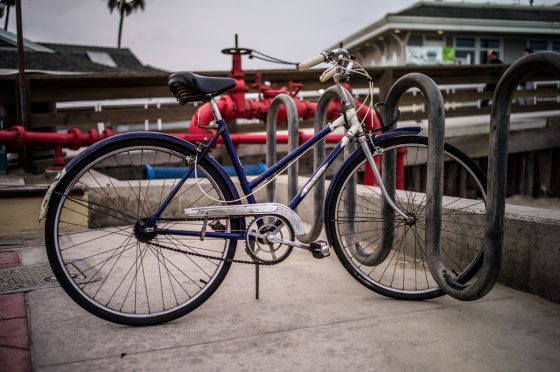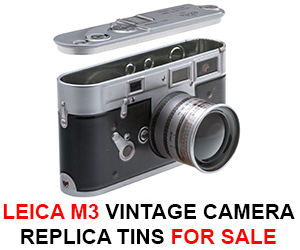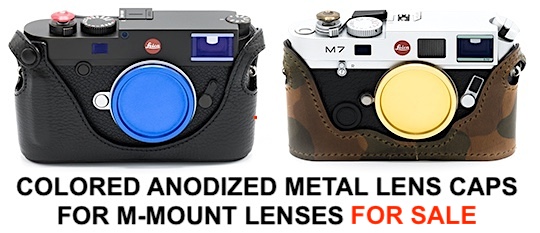Leica M9 Rangefinder Review by Carl Garrard:
Leica M9 Rangefinder Review: Since I’ve decided to switch to a rangefinder as my main camera system, life has been simpler. My creativity along with my passion for photography, seem in full swing again. Sometimes I reflect with a heavy heart when I realize that I almost lost both of those vital components that make photography so special to me. All of my life I’ve understood the value of a less is more philosophy, but as I get into more mature years I realize the rewards of living your life that way. Since publishing my M8 article I’ve been active. I’ve been making new contacts, having discussions with other passionate like-minded photographers, planning more, and looking forward to my next photo outings. I continue to hone my technique using a rangefinder camera. For those of you who are considering getting into rangefinders with a limited budget, this article will serve as a practical point of view when comparing the Leica M9 with the Leica M8. In a way, this is really a part II to my M8 article. This is my fourth rangefinder article here, and likely won’t be the last.
Leica M9 Best Current Price
Leica M9 Rangefinder Review (Diary Part II)- The Investment
So here you are reading about the M9, likely you either own one or may be window shopping. After all, the price of admission into digital rangefinders is a financial commitment for most individuals. Currently, the M8/M-E/M9/M240 (in that order) are your most affordable options. To go from the M8, you will about double your investment in a body, even with an M-E. No matter how you slice it, the price of admission for a camera body alone is a larger investment of capital than most camera systems initially. Good news, it won’t depreciate in value all that much, if at all. In some cases, you can even profit from your gear if you decide to sell it. In this world, you get what you pay for. Even if you decided to choose Voigtlander or Zeiss glass for your Leica rangefinder, you’ll get a great return on your money. I want to thank Leica Miami for the ability to use the M9 for this review, and I sincerely hope they and their families are recovering well from Hurricane Irma. Most of the images in this review were made using the Voigtlander 35mm f/1.7 Ultron, and Voigtlander 50mm f/1.5 Nokton.

Any Leica Rangefinder is an investment, there’s simply no getting around it. Even an older M9 will run you $2,800-$4,000 USD. But remember, a good investment isn’t a bad thing.
Leica M9 Rangefinder Review (Diary Part II)- Hey You, It’s Time for Change
What I can tell you is this. If you are considering shooting with a rangefinder but you aren’t yet thinking about changing your style of photography, you might as well pass on the entire idea. The simple truth is that shooting with a digital rangefinder is going to change the way you approach photographing, there’s no getting around that. For those who have stuck with it, its likely one of the most rewarding experiences for them. Others might have either given up too quickly or, the system just doesn’t suit them. There’s no shame in that. Where do you think you fit in? If you are ready for change, then perhaps rangefinder photography is for you. There really are no shortcuts with other cameras, even if other manufacturers make those empty promises in their designs.
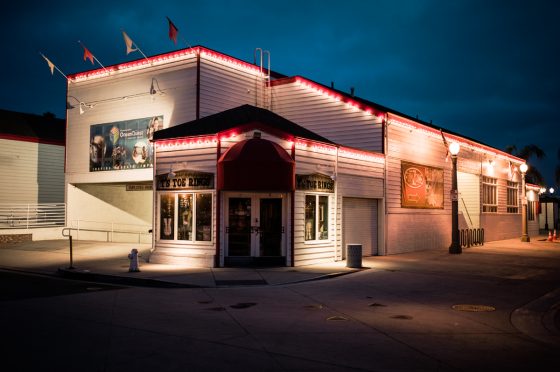
I love walking empty streets early in the morning photographing historic areas of Southern California like Balboa. Last thing I want in my hands this early in the morning is a fidgety complicated camera. I just want to use a camera as an extension of myself and make some photographs. Using a rangefinder has become a relaxing process now.
Think Fujifilm for example. I think the high-end Fujifilm cameras are excellent, but when I use them, they have an identity crisis. They have all the promise of a manual looking camera, the simple form follows function concept, but using them ends up being a complicated sort of dizzying choice parallax. I find that I tended to defer to relying on the camera’s automation more than using established and proven photographic techniques simply because automation is available.
The trick that more manufacturers should implement is to design cameras with a less is more philosophy. Simplifying camera design to the bare essentials without leaving out necessary tools to make a great photograph is the way to go. Why? Because we just don’t have enough cameras like this available on the market. There just aren’t many cameras produced today that don’t include video or live view. Leica at least, are doing this with certain M designs. But even Leica themselves could stand to offer more M versions without those features.
To me, designing cameras this way puts the photographer in the right direction to learn and practice fundamental photography. There is still too much inherent dependence on convenience and automation. Too many cameras these days have become an entire toolbox, vs. being a single tool. In the past I praised that, today I do not. We need more single tools, to balance the market. Leica rangefinders like the M8, M-E, M9, M Typ 262, and M-D are simple tools, with the latter almost going back to the film days.
Leica M-D. As simple as it digital gets.
No screen, no buttons. Yet, digital. The M-D puts you face to face in the mirror with your knowledge of fundamentals. One of Leica’s most brilliant design decisions. Think M9, then the next revolutionary step.
Leica M9 Rangefinder Review (Diary Part II)- M9 And M8, A Detailed Comparison
So with that being said, let’s shed some light on the M8 and M9 and report what I believe to be the most obvious and practical differences. First the obvious differences. Price is the first thing you will notice, the M9 is about double the price of the M8 for a good used condition specimen. So, just what advantages does that price of admission afford you? Well as I mentioned in the M8 review, it’s not simple. More expense doesn’t default as better, that’s a bad mental habit. So let’s break that habit and break it down for you.
Leica’s M9 has a newer, larger, 18mp full frame sensor, also custom made by Kodak. This is the biggest technical difference between the two that also affects image quality, your shooting style, choice of lenses, choices of medium, and the way you use the viewfinder. Choice of medium: the M8 can do infrared photography, and the M9 cannot. Monochrome images also look better with the M8 at lower ISO’s in most circumstances.
Secondly, the M9 tops out at max shutter speed of 1/4000th of a second, while the M8 at 1/8000th of a second. Lastly, an ISO button is now available on the M9, but, it also lacks the small LCD screen on top which gives you a quick visual of battery life and shots remaining. You must now dive into a menu to see your remaining battery life, or press image playback to see your remaining shots. These changes constitute the most obvious differences between the two that have the most noticeable and practical impact on how you use them.
No 1/8000th of a second shutter, but you do have a “pull” ISO 80 option to help counter that. No small LCD to show you battery life or remaining shots. The info button below takes its place. You gain more detailed battery life and a “live” shutter speed read off the meter.
The M9’s design changes only the ISO button in the middle on the left, it replaces the protect button. The info button has dual purpose including a live shutter speed read off the light meter. Kind of handy.
Other less practical changes are that the M9 has a slightly quieter shutter than the M8, so it helps keep things a little quieter when you choose the discreet mode, at least on the first cycle of the exposure process- the shutter release. When the camera recocks the shutter, the mechanical winder sound is the same.
Since the M9 tops out only at 1/4000th of a second, Leica have included a “push” ISO 80 option to make up for the one stop loss of shutter speed vs the M8. This ISO option is not a native ISO option, and barely degrades image quality over ISO 160. It’s not a big deal, and helps when you want to shoot wide open like I do. Frame line changes in the viewfinder have also been made to afford 35/135, 28/90, 50/75mm options. So instead of a 24-90mm range you get 28-135mm.
The LCD screen quality is said to be slightly improved but I’m not really noticing much difference and I really don’t care. You can zoom in a bit more to see your sharpness better, but that’s really all I notice.
Leica M9 Rangefinder Review (Diary Part II)- Photographing With the M9
Really, there’s not that many practical differences using the M9 compared to my M8. I’ve noticed it’s all about subtlety and small changes, for the most part. For example, I find focusing a bit easier because there seems to be more contrast with the focus patch compared to the M8. And for whatever reason that is, this is truly welcome. I also find that the metering seems to be more touchy and less reliable than the M8, for whatever reason. They both have the same kind of metering, so you’d think they were the same, but I do see a difference.
What I also notice when shooting with the M9, is that all of the feedback that Leica received from the many photographers about their struggles with the M8 is obviously implemented. This feedback is translated into it’s form and function. Since I like the M8 as is, there’s not much effect these changes have on me positively. What I do like, is the ability to get wider angle shots. Also, the M9 has some areas of image quality that is has improved, without losing all of the good traits the M8 has. They are different beasts that seem to compliment one another, rather than dominate one another depending on your needs.

Leica’s M9 has enough weight and a lack of internal vibration to take sharp hand-held shots in very low light. This without the need for image stabilization of any kind. I’d hold up my M cameras to any modern camera for low light shooting with no blur. ISO 160, 1/30th of a second. Scroll down a couple images below, where I include a shot at 1/6th of a second, ISO 400.
And of course, because the M9 is a full frame sensor, the frame lines are a bit more accurate too (as accurate rangefinder can be). This does aid a bit in making my compositions more accurate on the first try, but in no way are the frame lines perfect. Overall the M9 feels a little easier to use, but I’m not so sure that is a good thing yet or not. Shooting with the more limited M8 forces me to be ultra sharp and aware and plan even more. As a result of these limitations versus the M9, I shoot slower and more carefully as a result. It’s an interesting phenomena.
So which camera I would prefer to use overall? It largely depends on my mood and what I wish to shoot, really. The M9 is definitely more of a forgiving and easier to use platform than the M8, but that doesn’t necessarily make it a better camera for me. What can I say? It’s complicated.
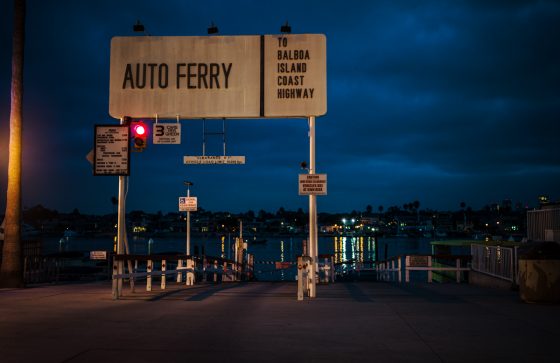
I do appreciate the ability to frame a little more accurately, but this shot still took three frames to get just right. That’s rangefinders for you. The more I shot with the M9 though, the more I could anticipate parallax and get my framing correct.
Overall though the M9 is a rangefinder, and thus, I do enjoy using it much the same as the M8. I’m not totally blown away with it versus the M8 as the prevailing wind seems to carry. They both definitely do have slightly different personalities too. Reading that is probably silly to users who don’t use Leica rangefinders but it’s true; the two cameras are so simple that any little design differences become noticeable immediately.
In some ways the M9 is more temperamental (metering) but mostly it’s more forgiving and easier to use than the M8. Like I said in my M8 review, I do like feeling forced to slow down to shoot. The M9 certainly captures that part of the magic when compared to other digital cameras no doubt, but I find it tempting to make a lot more frames when compared to the M8 as a result. Is that a good or bad thing? I’m not sure yet.
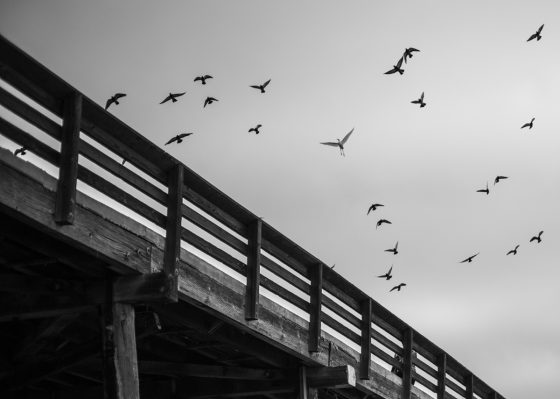
Egret amongst the pigeons. ISO 80 f/1.7 1/2000th of a second. The ability to crop helped me salvage a decent composition from this shot, while still having enough resolution to make a large print (about 6mp resolution left). I think monochrome still looks pretty good on the M9, due to its CCD fingerprint.
Switching thoughts now to areas where M rangefinders like the M9 could use some improvement. This is a difficult challenge to tackle. M’s are pretty much dialed in and simple tools. In the context of their design, they just work. Reliable, tough, well-built machines that don’t leave a lot of open doors to real life practical design faults. I did however find a couple.
Leica should imbue some sensor cleaning technology in their M rangefinders. Even with an excellent swabbing system, I wasn’t able to completely remove dust spots from the M9 or M8’s sensor. This problem could largely be solved by adding a layer to the sensor incorporating a clear piezo crystal ultrasonic vibration system. Doing so would do wonders on helping keep dust off the main sensor chip. Since sensor dust is not a “natural” part of the photograph, I have no issues with incorporating this kind of technology into an M camera design.
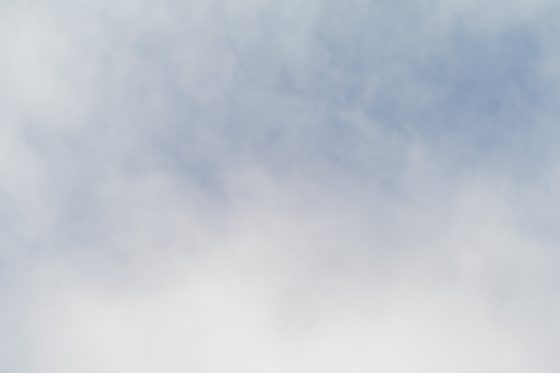
This photo demonstrates stubborn dust spots that show up, despite swabbing the sensor three times in a very clean environment. Click on the photo for a larger view and you will see them.
Another small irritant is the plastic control wheel on the back. At times I find it to stick under pressure when attempting to use it to scroll through menus or zoom in on a photograph. It takes a bit of finesse sometimes to keep it rolling nicely, which on a camera of this cost, should not happen. NOT however, a big deal.
Leica M9 Rangefinder Review (Diary Part II)- Image Quality Differences in Detail
The Leica M9 when it was introduced in 2009 changed the way lens characteristics behaved in digital cameras. Because of the offset micro-lenses on the sensor at the edges, the light fall off (dark cornering) was dramatically reduced and more edge detail was retained when compared to a camera with a standard sensor design. This was apparent immediately when reviewing my very first images- even when using a lens that is quite well known for a bit of light falloff ( Voigtlander 35mm f/1.7 Ultron). This lens still has plenty of it, but the sensor helps tame any additional light fall off. The biggest advantage to me is the retention of detail all the way out to the edge. That, is very nice.
So let’s get right to the nitty gritty. When comparing the M9 to the M8 I’ve noticed the following improvements in image quality:
- A near lack of any fixed pattern banding
- More workable resolution
- Lower noise
- Somewhat better vignetting control
- A tad bit more Dynamic Range
All this list translates too in practical terms is having the ability to print larger while retaining similar detail, the ability to use the M9 hand held in even lower light situations, and the ability to crop your images more. The sensor is indeed improved, but you still have to watch out for clipping those highlights.There is a simple solution to that, meter for highlights, raise your shadow values.
Since the sensor noise is better controlled and there’s no fixed pattern banding, I’m not shy to increase ISO a stop or two above the normal M8 settings. Doing so equates to the freedom to shoot more hand held shots with even less ambient light. Processing the raw files is a real Balboa Bar too.
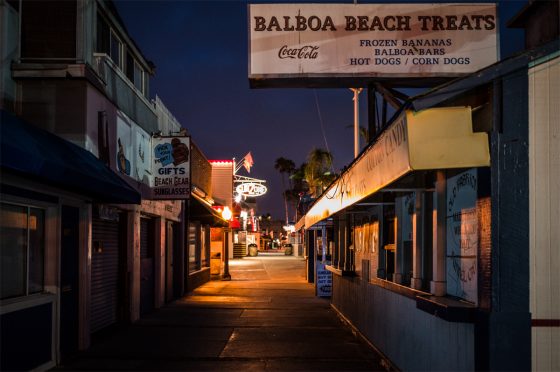
ISO 400 1/6th of a second hand held and it looks great. I would have stayed at ISO 160 with the M8, and I would have still got the shot. I would have just had to stand a bit more still and perhaps opened up the aperture more to compensate.
Since the M8’s sensor is slightly smaller, it doesn’t have an issue with light fall off much either, even though it doesn’t have offset micro lens construction like the M9’s. In fact, they are almost equal in this regard, with the slight edge to the M9. All in all, the M9 has more image quality capability than most people would ever need, and certainly more than I really need. It’s impressive actually, but I’m guarded about being seduced by the luxury that affords. It’s easy to become dependent on it as a crutch.

Sunset in Rancho Santa Margarita. I only cropped the height of the image, not the width. This would still make a nice 40″ wide print. The Leica M9 has more latitude this way than the M8.
Leica M9 Rangefinder Review (Diary Part II)- System Thoughts and Options
Bottom line is that practically speaking both cameras have advantages and disadvantages and you just have to choose which set of both work best for you. The real tricky part here is if you haven’t tried either camera, how will you know which is best for you? Fact is all you can do is make your best informed decision, and go for it. Then make it work for you. No matter what camera you choose to use, you are going to have to live within its confines. The trick is, and the most important part of this article, is being happy with living in those confines.

Black and white doesn’t render as well as the M8, but it’s not bad either. I could live with it, without a doubt.
Unless you have access to both cameras for use (like I ended up having for this review), like I said before your gut is your best friend. Unfortunately, it seems like a big gamble when you are spending so much money on a camera and lenses, but I can help make it easier for you.
- First, get a fast and affordable 28mm or 35mm lens to start- depending on if prefer a wider focal length or not. Both lenses will be versatile choices for either camera.
- Two, be realistic about your resolution needs. Do you really need 18mp, or 10mp?
- Three, consider what your favorite time of day is to shoot- lower light go for the M9 if price is no object, but, you can make the M8 work for you in the same conditions with a fast lens. So don’t fret it.
- Lastly, if you aren’t a patient person and have a deeper pocket book, the more accurate frame lines in the M9 may suit you best. If you are patient, it won’t matter, so save money and get an M8 instead.

Dusk Light. ISO 250 1/8th of a second hand held. Venus is faintly visible in this shot in the upper left. Soft light and wispy cloud formations excellently rendered with the M9’s CCD. I have no issues relying on a rangefinder such as the M9 for nearly all of the types of photography I do. Nothing else gives me the feeling of shooting with a rangefinder, which almost makes it worth the price of admission alone.
I know most people worry about the M8 and having proper frame-lines in your viewfinder. But after shooting a while with the M8 you almost become so accustomed to previsualizing your final shot that you don’t need frame lines to tell you what you’ll be getting. You just get used to it and use them as a rough guide, or for leveling your horizon. Some will never get used to that though.
Overall they are both rangefinders and give you a very similar experience. Both are fantastic cameras. Both have wonderful CCD (more film like) image quality. Both have frame selector switches and old school bright line framing windows. Both use the same battery, the menus are very similar. Neither are a bad choice. One will save you more money. Both hold their value. The M9 might be a better overall investment monetarily. Time will tell on how they hold value in the future, but the full frame factor really makes it a near sure thing.
Recently Leica stopped doing replacement sensor service on the M9 for free, but they will still do it for a cost if you have a degrading glass cover on your sensor. It will cost you time and money, so keep that in mind. Just contact Leica service if you need it completed.

The Leica M9 is just at home in the hills as it is in the streets. Although not resistant to weather, its small enough to keep under a brim of a hat or coat pretty easily. Note the color response is very similar to the M8. Interesting.
On a different note, the question comes up – Why not have both cameras? The best of both worlds so to speak? Since I am not about gear hoarding anymore I resist the urge to suggest that to you. Plus it is expensive. I think there is huge value and a serious advantage with shooting with just one camera almost all of the time. You become part of it, and it of you. Being more prepared with your gear lands you more keeper shots.
With that said, if you must have both, the M8 and M9 have more in common than not, and its not like you are going to lose much, if any, of your invested dollars. Prices in some cases have actually gone up for both in the last year. Nearly unheard of with digital photography equipment. Welcome to Leica.
Switching back and forth between both camera’s shouldn’t affect you too much either. Assuming you insist on owning both cameras, I suggest putting a wider angle lens on the M9 (28-35mm), and a longer focal length lens on the M8 (50-75mm). The M8’s 1.3x crop factor can give you a slight advantage for tighter framing (portraits perhaps) while the M9 will give you a similar advantage for winder angle framing. Used in conjunction, you won’t have to change lenses, but you will have to carry two cameras. That isn’t easy to do either, but the cameras are small enough. Two Leica’s and two lenses will be a lot less bulky than one large DSLR and a couple lenses.
Leica M9 Rangefinder Review (Diary Part II)- Temporarily Concluding

Magnesium mid frame built like a tank. That, with solid milled brass upper and lower portions make the M cameras almost indestructible.
If I don’t sound that enthusiastic about recommending the Leica M9, please keep in mind that I’m keeping true to a practical ideal for this review. It’s the new tone of my reviews going forward. I’m more interested in gear fitting a readers creative vision rather than gear motivating a vision. Gear can’t do that. Its all inside you.
So, If price isn’t a consideration (when is it not for most of us?) the M9 is nearly just as great to me as the M8, but in different ways. I’ve gone on about the M8 already in my review so much it would be an exercise in redundancy to do that here also with the Leica M9. Yes, I certainly recognize the advantages of the M9- the convenience of having more accurate frame lines, slightly better noise performance (without any banding), and cropping ability/resolution increase.
Yet, like I said in my M8 review, I do not obsess about such things anymore. I notice them, and recognize how they can be important for others. These days, I prefer to find ways of making a camera work for me, as opposed to making excuses not to work with one. I’m obsessed about making a great photograph, and I believe readers should do the same.
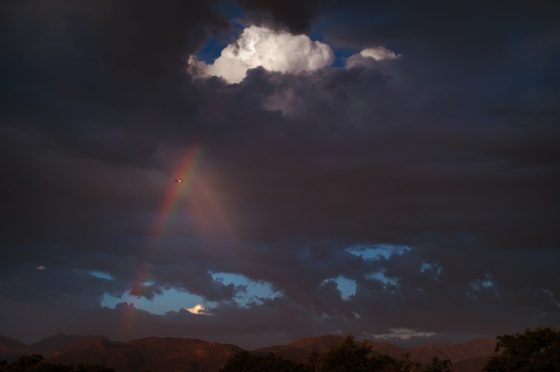
Rain curtain w/rainbow, thunderhead, and passing helicopter. Timing is everything. M’s are fast if you know how to use them.
Yet I concede, the Leica M9 is a fine rangefinder. I will be shooting with it more to get a longer term opinion of it. During my time with the M9, I couldn’t help but constantly be reminded the that it’s double the price of an M8, and I tended to worry about it more while using it. I don’t know about you but I do tend to be more cautious with more expensive equipment. That does add weight on my mind while shooting with it or just having it with me- something far less so with the M8. With that said, I am very pleased with the performance of the camera, just as I was with the M8.
Falling in love with a camera is a dangerous thing to do. Like anything, life takes balance and you should never lose sight of what is most important. Photography is most important. It goes without saying that it is a wonderful, immersing, and creative experience if you encourage and challenge your inner vision.
With that in mind, I’d be blind not recognize such a special product. Leica’s employees create passion in the form of a camera. What’s not to like? Leica imbue hand made craftsmanship and a devotion to an ideal in their products that is nearly unrivaled. The build, execution, and performance of the Leica M9 is simply spectacular. In closing I think the M9 has no real flaws. While it is more limited in the type of photography it can do, it has some performance advantages over the M8 which make it worthy as a serious consideration. I believe that it is a tool that you can create a lifetime bond with to express your vision. As long as you stay true to that, the Leica M9 is definitely worth the price of admission.
Stay focused.
-Carl Garrard
What you should be looking for when you purchase a used Leica M9. Thank you Leica Store Miami, recover well!
If you have an interesting idea for a guest post, you can contact me here.
